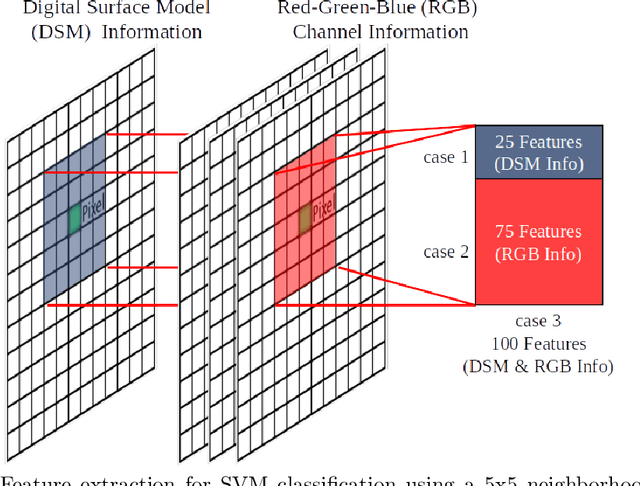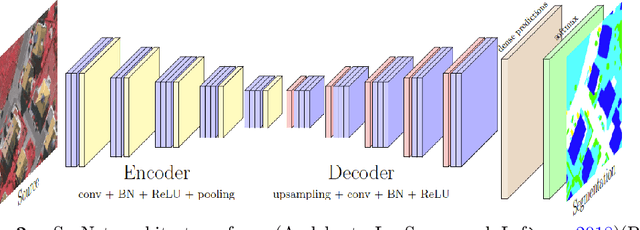Adam Dawood
On the Importance of 3D Surface Information for Remote Sensing Classification Tasks
Apr 26, 2021



Abstract:There has been a surge in remote sensing machine learning applications that operate on data from active or passive sensors as well as multi-sensor combinations (Ma et al. (2019)). Despite this surge, however, there has been relatively little study on the comparative value of 3D surface information for machine learning classification tasks. Adding 3D surface information to RGB imagery can provide crucial geometric information for semantic classes such as buildings, and can thus improve out-of-sample predictive performance. In this paper, we examine in-sample and out-of-sample classification performance of Fully Convolutional Neural Networks (FCNNs) and Support Vector Machines (SVMs) trained with and without 3D normalized digital surface model (nDSM) information. We assess classification performance using multispectral imagery from the International Society for Photogrammetry and Remote Sensing (ISPRS) 2D Semantic Labeling contest and the United States Special Operations Command (USSOCOM) Urban 3D Challenge. We find that providing RGB classifiers with additional 3D nDSM information results in little increase in in-sample classification performance, suggesting that spectral information alone may be sufficient for the given classification tasks. However, we observe that providing these RGB classifiers with additional nDSM information leads to significant gains in out-of-sample predictive performance. Specifically, we observe an average improvement in out-of-sample all-class accuracy of 14.4% on the ISPRS dataset and an average improvement in out-of-sample F1 score of 8.6% on the USSOCOM dataset. In addition, the experiments establish that nDSM information is critical in machine learning and classification settings that face training sample scarcity.
 Add to Chrome
Add to Chrome Add to Firefox
Add to Firefox Add to Edge
Add to Edge